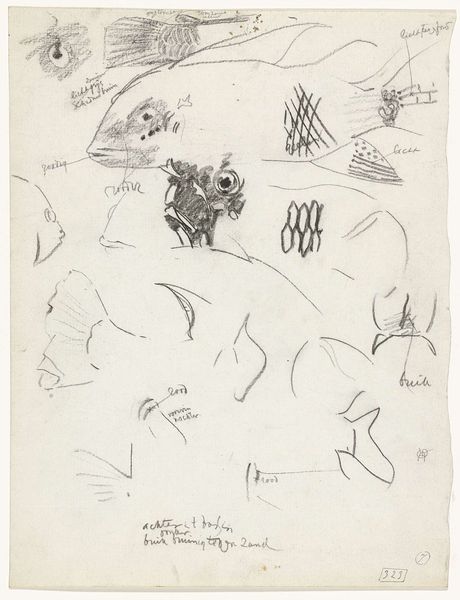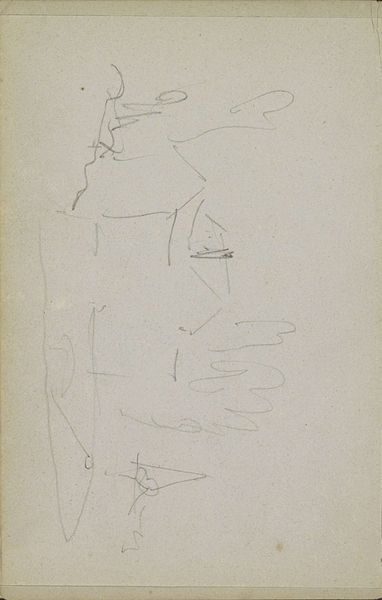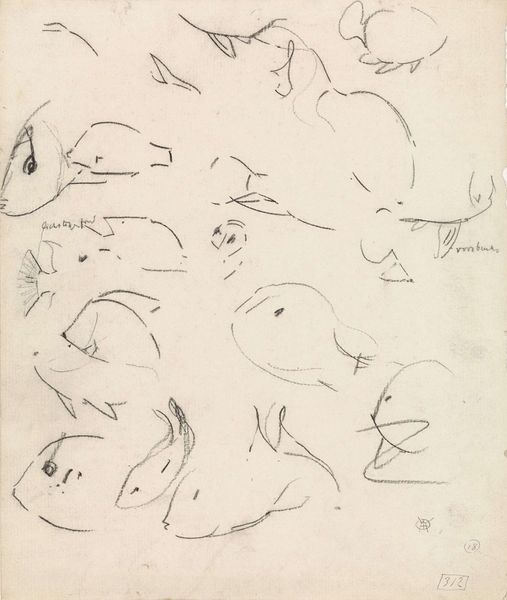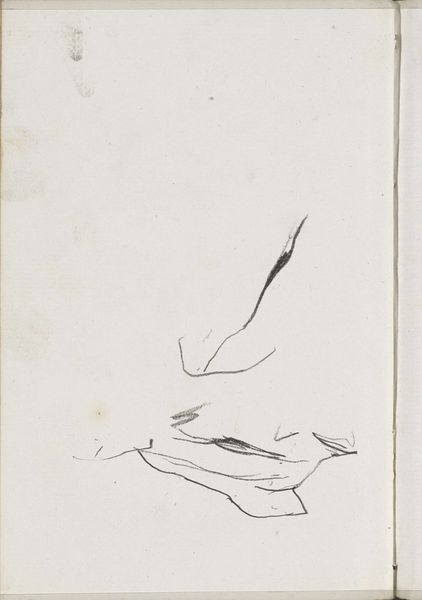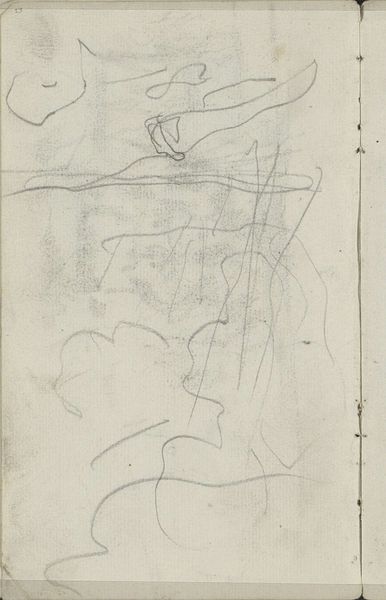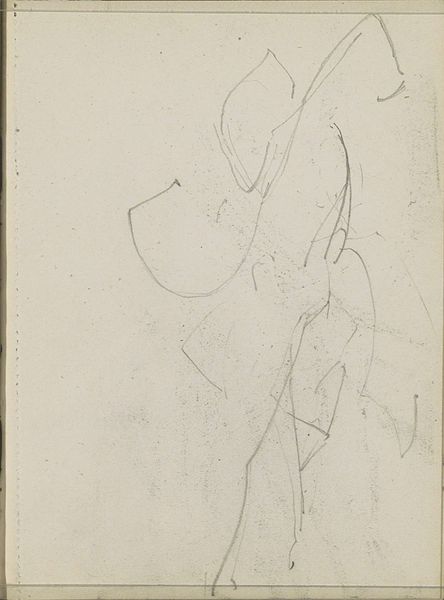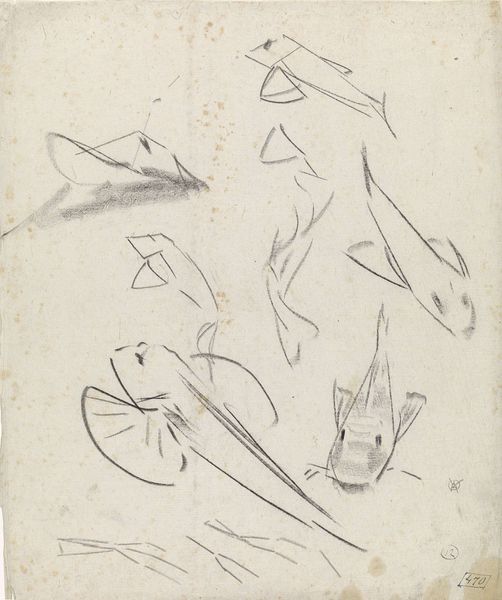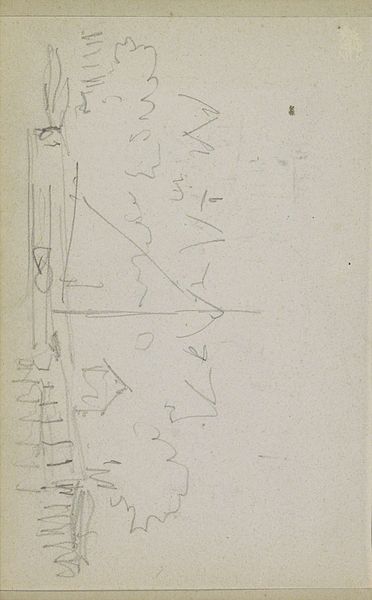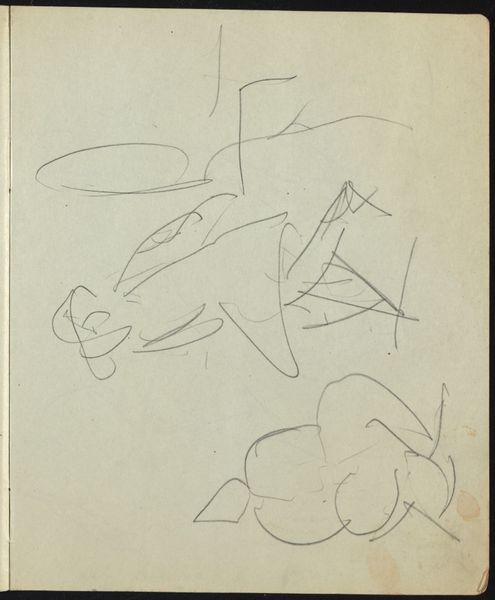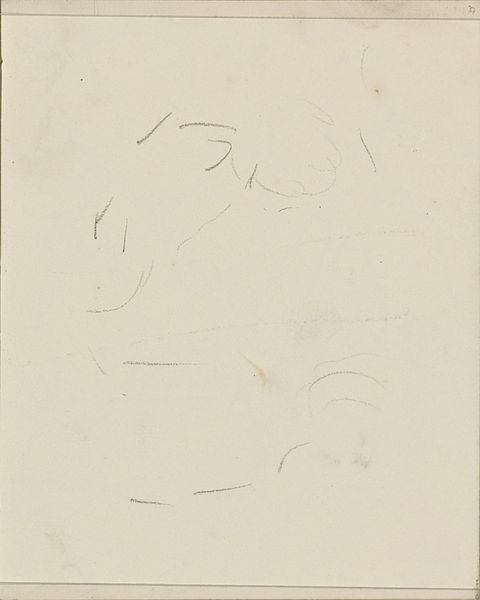
drawing, paper, pencil
#
drawing
#
organic
#
paper
#
pencil
#
line
Dimensions: height 291 mm, width 238 mm
Copyright: Rijks Museum: Open Domain
Curator: Here in the Rijksmuseum, we’re looking at Gerrit Willem Dijsselhof's "Studies van vinnen," created between 1876 and 1924. It’s a drawing on paper, rendered in pencil. Editor: First glance? Feels like a scientist's notepad doodlings after a very long, slightly hypnotic lecture on…fish? A collection of airy, translucent nothings. Curator: Indeed, Dijsselhof was deeply interested in the organic world, a theme prevalent in his oeuvre. Consider how scientific inquiry intersected with the artistic imagination in the late 19th century. Museums, institutions, and increased global travel provided more and more direct access to the world’s natural wonders. Editor: Okay, historian. But what jumps out to me is how delicate those pencil lines are. They're almost hesitant, searching for form rather than declaring it. It’s like he’s coaxing the fins into existence, one tentative stroke at a time. It feels very private, you know? Like a visual meditation. Curator: I would add that Dijsselhof and his contemporaries in the Dutch Arts and Crafts movement saw immense potential to transform society. They wanted to transform quotidian environments with new ideas about form. Ornament based on the natural world played a large part in this artistic program. Editor: So, fins as revolutionary objects! Love it! Though, personally, these drawings whisper a softer revolution. More about slowing down, really looking at a humble fin and finding some weird, quiet beauty. And speaking of beauty, I can feel this artist working towards something greater in these "studies". What are your feelings about the value of "studies"? Curator: “Studies,” in their varied form, offer unique insight into the artistic process. Dijsselhof's preparatory drawings reveal how scientific observations about the physical world drove decorative compositions. The history of collecting artwork, whether drawings or finished paintings, is often a testament to cultural change as much as it is artistic quality. Editor: I agree. Art changes society whether or not the artist intends for that to happen. It is still possible to hear this artwork singing with silent, harmonic and repetitive motion. Anyway, thanks for talking with me! Curator: My pleasure. These "Studies van vinnen" offer us more than just sketches of fins; they present a window into an era where art, science, and social aspirations beautifully converged.
Comments
No comments
Be the first to comment and join the conversation on the ultimate creative platform.
